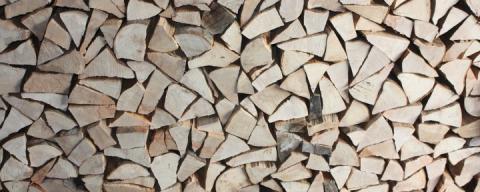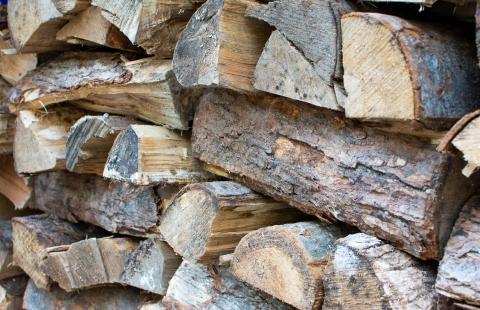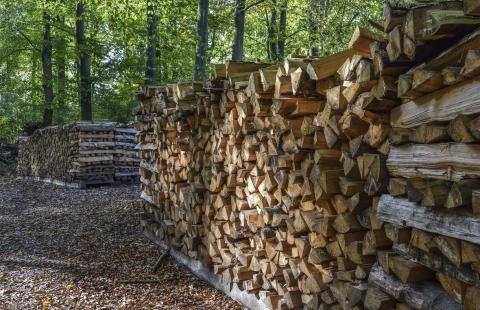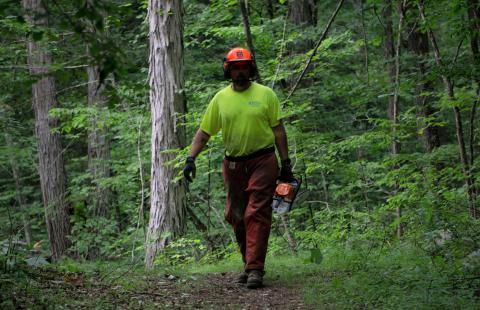Heating your living space safely and efficiently
If you've never burned wood for heat, if your home hasn't had a wood-heating appliance in continuous winter use in recent years, or if you plan to install a new wood-heating appliance, you'll need to inspect the chimney and make sure the house is set up to burn wood in the intended appliance safely and efficiently.
If you feel unsure about your own ability to make the assessments recommended here, please consult an appropriate professional or town official to help you. Woodstove vendors may offer home assessments, stove installations, and referrals to experienced chimney professionals, masons, builders, or energy auditors. Some vendors offer a complete array of woodstove services.
Although New Hampshire has adopted the National Fire Protection Association's 211 Standard for chimneys, fireplaces, vents, and solid fuel-burning appliances, some cities and towns have adopted additional requirements, which typically involve inspection of the wood heating appliance before use. Contact your town fire department or building inspector to make sure your plans follow all state and local regulations.
Each insurance carrier has its own standards regarding installation, inspection, and other aspects of heating an insured home with wood. Your agent can advise you about how to proceed and whether you'll need to modify your current coverage.
Wood stoves must be connected to a lined chimney with a flue of adequate size to carry the smoke from your wood heating appliance. Note: A wood stove can't share a flue connected to another fuel source such as heating oil or propane. You may want to hire an experienced chimney professional or mason to inspect your chimney and recommend repairs or other changes. The Chimney Safety Institute of America (CISA) homepage has a good tutorial on the various levels of masonry chimney inspections. This nonprofit association also certifies chimney sweeps. The Canadian nonprofit woodheat.org has an excellent primer on how chimneys work and how to avoid common chimney problems. Your local building inspector or fire official may make chimney home inspections. If not, they probably can refer you to an experienced chimney sweep or mason who can. Before you hire, ask for credentials or certifications, and ask for and check references from previous clients.
Will your home's design and layout accommodate a wood heating system? First, consider how the heat from your wood stove will move around and through the living space you intend to heat. While central heating systems (including indoor and outdoor wood furnaces) use pumps and fans to distribute heat throughout the building, wood stoves radiate heat directly into the space around them. Although some stoves come equipped with fans, and some stove users install fans to help distribute the warm air, the air warmed by the stove's radiant heat rises through natural convection, through open stairwells, ceiling grates and other spaces between levels of a dwelling, gradually displacing cooler air to warm those areas farther from the stove.
Although it makes sense to locate the stove or stoves in the rooms where people spend the most time, your home's design may not permit a woodstove installation in one of them. Each wood-heating appliance will have specific requirements for safe distances ("clearances") between the stove/stovepipe and the room's walls and other combustible materials. To comply with state and local codes, follow the manufacturer's instructions for installation and maintenance of your stove. If you bought a second-hand stove that came without an owner's manual, contact the manufacturer to get one for your model. If you can't locate a manual, or you have any questions about safe woodstove installation procedures, call your local fire department or building inspector for help.
"Backdrafting" occurs when a woodstove puffs smoke into the living space instead of up and out the chimney. It's always a bad sign. Wood smoke should never enter your living space. An inadequate or clogged chimney can cause a backdraft. Like all fuels, wood needs oxygen to burn. A woodstove needs air for combustion and also for the draft, to keep combustion gases (smoke) going up the chimney. Typically, woodstoves draw their combustion air (sometimes also called "makeup air") from inside the house. Well-insulated homes that contain other vented appliances such as kitchen and bathroom exhaust fans, clothes dryers, water heaters, and furnaces, may not always have enough inside air available to allow efficient operation of woodstoves. When other power-vented appliances switch on, they can overcome the natural draft of the chimney and pull wood smoke down and out through the stove into the living space.
- You have difficulty getting a wood fire started or you can't keep a fire going.
- You smell smoke or get soot on your walls.
- Your carbon monoxide detector keeps sounding alarms.
From the U.S. Department of Energy's wood and pellet heating pages: Designed more for show, traditional open masonry fireplaces should not be considered heating devices.... High-efficiency fireplace inserts have proven effective in increasing the heating efficiency of older fireplaces. Essentially, the inserts function like woodstoves, fitting into the masonry fireplace or on its hearth, and use the existing chimney. A well-fitted fireplace insert can function nearly as efficiently as a woodstove.
If you live in rented housing, contact your landlord before installing a wood burning appliance. If you do install one, or if the unit already contains a woodstove you plan to use, learn all you can about safe wood burning and follow the guidelines faithfully. Consult experts or local fire officials if you have questions or concerns.
Before you buy a woodstove or haul that old stove out of grandpa's barn to hook up in your living room, inform yourself! Heating your living space safely and efficiently with wood requires thinking through the many aspects of matching your living space and chimney to a stove, installing it properly, and understanding what's involved in maintaining your stove, stovepipe and chimney.
Talk to friends, neighbors, and heating experts who've had long-term wood-heating experience. Ask which features of the stoves they use they like or don't like. Ask about a stove's efficiency, ease of operation and maintenance requirements. Some stove vendors offer one-stop shopping for wood heat households, even coming to check out your home so they can recommend the right stove and location to meet your needs. Before you buy, ask your vendor about a stove's routine maintenance requirements. which may include cleaning the stovepipe and thimble and replacing gaskets, firebricks, baffles, catalysts and other stove components. Chimney professionals can assess the condition and suitability of your chimney, clean and repair chimneys, and teach you how to check and clean your stovepipe and thimble.
- Burn Wise U.S. Environmental Protection Agency Web site offers a wealth of information on burning the right wood, the right way, in the right wood-burning appliance to protect your home, health, and the air we all breathe. A good starting point for new or prospective wood-burners, with plenty of new information for homeowners who've burned wood for years.
- Ten characteristics of successful stove and fireplace systems This fact sheet by a Canadian nonprofit promoting safe, efficient domestic wood heating defines "perfection" in a good wood heating system (including the need for an informed operator) to help homeowners judge their own.
- How to Buy the Right Wood Stove Read this before you go shopping.
- Choosing the Right Woodstove EPA primer on selecting a modern, efficient wood-burning appliance.
- An installation checklist Another excellent fact sheet from the folks at woodheat.org.
- Maintenance of modern stoves, fireplaces, inserts, furnaces and boilers An excellent primer on replacing gaskets, baffles, firebricks, refractories, air tubes and catalysts; adjusting doors; touching up paints and enamels and more.
- All about chimneys Demystifies the role and operation of chimneys.
- Consumer Guide to Wood and Pellet Heating Good basic information about types of wood heating appliances, sizing and locating a stove, chimney placement and sizing, stove maintenance, and sourcing fuel supplies.
- Proper installation and maintenance Basic information from EPA.
- Successful Fireplaces in Tight Houses Technical information on why traditional fireplaces fail and ways to overcome their problems.
A cord is an amount of wood that is contained in a space of 128 cubic feet when the wood is ranked & well stowed, which means the pieces of wood are placed in a row, with individual pieces touching and parallel to each other and stacked in a compact manner.
Measure the length of the pieces in feet, multiply by the height of the pile in feet and multiply by the length of pile in feet. If length of pieces is in inches, divide the total by 12 to get cubic feet.
Here is an example:

Unless the wood is kiln dried, which assures a consistent moisture content of about 20%, the wood will vary quite a bit. It is not easy to determine the moisture content of firewood. Therefore, working with a reputable dealer is critical when purchasing seasoned wood which tends to be around 30% moisture content. Green wood can be in excess of 50% moisture content.
- Find sunny spot with good air flow
- Place wood off the ground on stringers or old pallets
- Only cover top of pile, to avoid trapping moisture
- Depending on species, cut and split wood needs 6-8 months of drying time
Purchasing firewood should be approached like any other business transaction—using good business practices. It’s best to be clear about what you want.
Specify:
- Quantity – cord or fraction of cord
- Length of the pieces – short enough to fit in your wood stove or fireplace
- Species Mix – a mix of hardwood
- Split or not? – split wood dries faster
- Dry or not? – kiln dry wood is about 20% moisture content, seasoned around 30%
- Where? Where do you want the wood dumped?
- Stacked? You will pay extra?
The best source of firewood information is in the local community. Check with neighbors and friends who burn wood for suggestions. Scan local newspapers and bulletin boards for firewood listings.
New Hampshire law requires that a receipt or delivery ticket be presented to the purchaser. It is important that a receipt is received for each load delivered. Never pre-pay for multiple loads until they are delivered.
- Name and address of the seller
- Name and address of the buyer
- Date delivered
- Quantity delivered and quantity upon which the price is based
- The price for the amount delivered
- A description of what was delivered
- Immediately inspect the wood to determine if what was delivered is what was ordered.
- Stack the wood within 2 weeks to assure the volume ordered is the volume delivered.
- Contact the seller, if problems or questions, before any wood is burned or moved.
- Pine, Hemlock, Spruce, Aspen: Dries and splits easily, good for kindling but not a long burn. Watch out for sparks.
- Maple, Birch, Ash, Beech: Moderately easy to dry and split. Good for all-around firewood, provides medium burn length.
- Oak, Hickory: Difficult to dry and may be tough to split, best for long burn and developing good coals.
- Overall: A mix of hardwoods is best with a small amount of kindling wood (pine, hemlock, spruce or aspen) mixed in. Talk to your dealer about your specific needs.
To prevent the spread of invasive insects, a quarantine is in place forbidding the transport of firewood across state lines and restricting the movement within the state. For the latest quarantine information go to www.NHBugs.org or call (603) 271-2561.
Emerald ash borer (EAB) and other damaging insects move far greater distance by human-assisted transport than the insects move on their own. One of the most common paths of movement is in firewood.
The state of New Hampshire recommends that you consider the potential impacts of moving firewood and that you practice safe firewood transportation behaviors, including:
- Use locally-sourced firewood—buy it where you burn it.
- Separate ash firewood and use it within 5 miles of its location of harvest OR season on-site for at least a year before transporting it.
- Only transport the firewood that you will use in a single visit or home-heating season. Remaining firewood gives pest insects a greater opportunity to emerge and infest an area.
Humans move damaging insects far greater distances than insects move on their own. One of the most common means of movement is in firewood. The State of New Hampshire implemented a firewood quarantine in 2011 to prevent the arrival of damaging insects by prohibiting uncertified firewood from entering the state.
From out-of-state
All firewood of out-of-state origin is prohibited from the State of New Hampshire unless it is labeled as certified heat-treated to 140°F (60°C) for 60 minutes. Untreated out-of-state firewood may only be moved into New Hampshire under compliance agreement and to a certified heat-treatment kiln or similar facility that will mitigate the pest risk associated with the transportation and storage of the firewood. Firewood originating in New Hampshire but transported out-of-state for processing may be eligible for a compliance agreement to move the material back into New Hampshire if origin can be documented, and identity and security of New Hampshire-origin firewood is maintained in the processing yard.
Maine, Vermont, Massachusetts, Connecticut, New York, and many other states have restrictions on moving firewood. Federal restrictions may apply depending on origin of firewood. For more information, visit www.dontmovefirewood.org.
Recommendations for firewood movement within New Hampshire
- Use locally-sourced firewood—buy it where you burn it!
- Buy or gather firewood near your destination, and only what you will use on your trip.
- When you buy firewood locally, get a receipt.
- Burn all firewood to completion before you leave; don't take it to your next destination or leave it for the next person.
- Tell your friends about the risks of traveling with firewood– no one wants to be responsible for starting a new pest infestation.

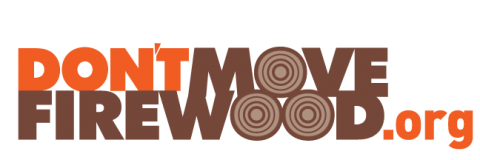

Articles
Events
-
January 20, 2026
-
January 21, 2026
-
January 22, 2026
-
January 30, 2026, 9:30 a.m. - noon
-
February 2, 2026
